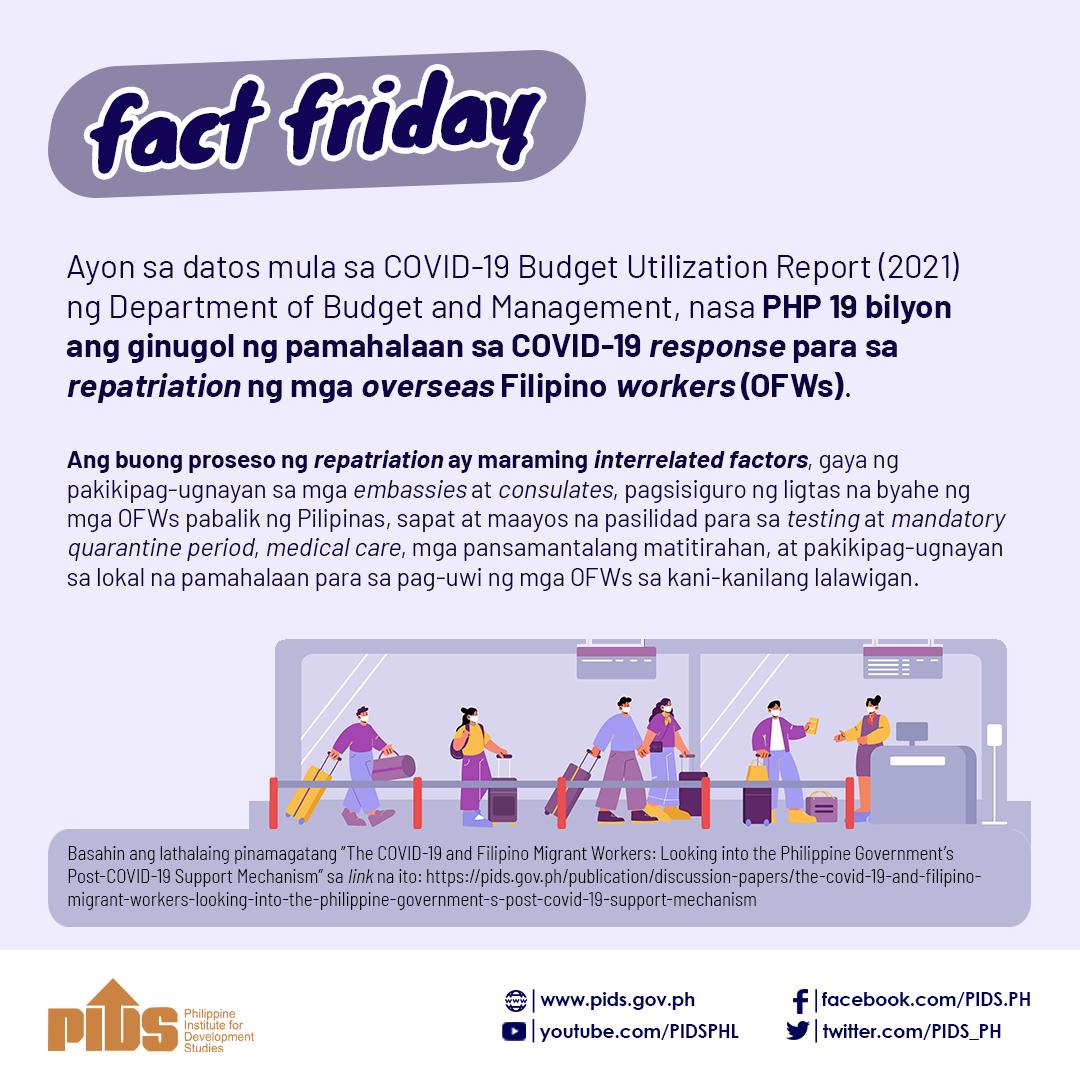LONG-RUN productivity losses from direct and indirect health impacts of the pandemic reached P2.3 trillion, according to a study released by state-owned think tank Philippine Institute for Development Studies (PIDS).
In a discussion paper, PIDS Senior Research Fellow Valerie Gilbert T. Ulep said more than half of this cost is attributed to productivity losses linked to Non-Covid morbidities due to lack of health care.
Based on Ulep’s computation, P1.7 trillion of these losses can be attributed to non-Covid morbidities while P398 billion are due to non-Covid deaths due to the lack of health-care services.
“Of the total long-run cost, indirect health impact accounts for the majority. This reinforces the need to address the indirect health impacts of non-Covid patients as a critical component of the pandemic response,” Ulep said.
Based on the data, Ulep said only P160 billion are attributed directly to Covid-related premature deaths and morbidities, including long-Covid. This is composed of P94 billion for Covid premature deaths and P66 billion for Covid-morbidity, including long-Covid.
“In addition to the direct mortality and morbidity cause by Covid-19, policy approaches to control the spread of the infection have led to unintended consequences, that is, of foregone hospitalization and outpatient visits, increase in the prevalence of malnutrition, mental health, diabetes, obesity, and physical inactivity, and decline in the uptake of essential prenatal care visits, immunization, ART (Antiretroviral Therapy) and TBDOTS (Directly Observed Therapy) for the Treatment of Tuberculosis (TBDOTS) services,” Ulep stressed.
Based on data obtained by Ulep from the Department of Health (DOH), the number of tuberculosis tests contracted 49 percent to 556,773 in 2020, from 1.08 million in 2019. The target for testing is 2.45 million.
He added that the number of those diagnosed and treated, whether new infections or relapse, declined 37 percent to 256,541 in 2020 from 409,167 in 2019. The target for diagnosis is 442,600.
In terms of HIV, Ulep said the number of HIV tests done in 2020 only reached 480,285 or a decline of 61 percent from the 1.22 million done in 2019.
Further, the number of newly diagnosed cases declined 37 percent to 8,058 in 2020 from 12,778 in 2019 while newly enrolled clients in ART also contracted 28 percent to 8,429 in 2020 from 11,654 in 2019.
“The poor uptake of these critical public health interventions affects the country’s prospect in reducing the incidence of TB and HIV as part of its global commitment to the Sustainable Development Goals (SDGs). The Philippines is one of the countries with the highest TB burden, and the country with the fastest growing HIV cases in the world,” Ulep stressed.
Ulep also stated that hospital admissions for adult internal medicine and pediatrics declined by 40 percent and 70 percent, in the second quarter of 2020, relative to the preceding year. He said this reinforced findings of other studies that the pandemic has affected the most vulnerable populations.
Further, he said Regional Health Unit (RHU) consultations declined, particularly among vulnerable populations. This decline was observed among children below 5 years old and the elderly population or those 65 years old and over.
“The large decline in consultations among these age-groups suggests the possible growing unmet need of essential healthcare services. Several factors could have contributed to the large decline in outpatient visits, in particular, the strict stay-in-home imposed on children and elderly since the start of the pandemic,” Ulep said.
Ulep said the data was obtained from 77 different public hospitals located across the Philippines. Of the 77 hospitals submitted, five are from the National Capital Region representing 6.49 percent of the total, while 93.5 percent were from other regions.
He said 55 hospitals are Level 1 facilities representing 71.43 percent of the respondents while seven (7) are Level 2 or 9.09 percent of the total and 14 are Level 3 or 19.48 percent of the total.
Study: Productivity loss from Covid at P2.3T












